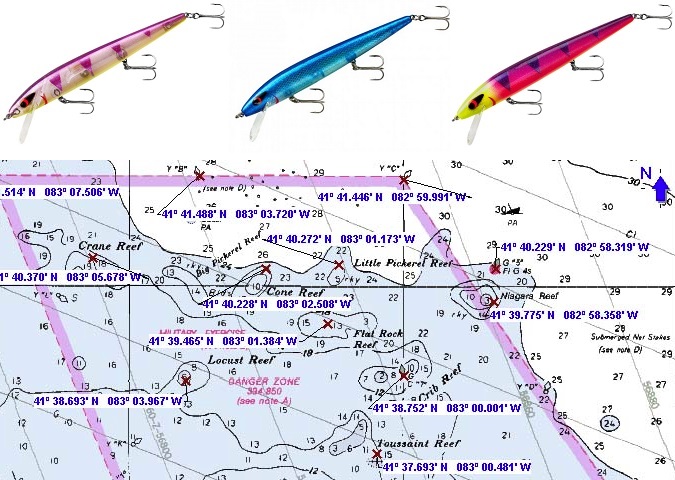Walleye fishing on Lake Erie’s Western Basin is always exciting, but it’s at its absolute best as March dissolves into April, according to Smithwick brand ambassador and competitive walleye angler Zak Jobes. “That’s when the fish migrate from their wintering areas toward spawning grounds in the eastern part of the basin,” he explained, “and a lot of big female walleyes are concentrated in certain areas. So, yeah, April is my bread-and-butter month on Lake Erie.”

There are countless places where Western Basin walleyes travel to spawn, including up the Maumee River and other tributaries. But with the multitude of fish that come and go in the Camp Perry Reef Complex, north of Port Clinton, OH, the area is pretty much the Chicago Union Station of the walleye world.
“Females stage in deep water nearby until they’re ready to spawn,” said Jobes, “then move up shallow, normally at night, to lay their eggs. Afterward many of them head to the deeper holes and mud flats around the Bass Islands to recuperate and feed for a couple of weeks. It’s the best fishing of the year!”
Truly, finding these walleyes isn’t particularly tricky. Any angler who knows how to use a good sonar unit can do it. “I cruise at 20 or 30 mph and keep my eye out for fish suspended at 15 feet or so,” Jobes said, adding that the upper layer of the water column is warmer than the depths and thus holds active fish.
“At 11 or 12 o’clock when the sun is out on a nice day in April, those fish might come up and hold just 5 feet below the surface,” he said.
Knowing which walleyes are more catchable comes with experience. “The water can’t be too clear or too muddy,” Jobes explained. “Clear water is cold and won’t hold active fish. And you might see a bunch of suspended walleyes in very muddy water, but it’s almost impossible to catch them.”
When the angler locates walleyes during a search run, he stops the boat and peers over the transom. “If I can see the anti-cavitation plate (on his Mercury outboard), I know water clarity is just about perfect,” he said.
Because even the upper water layer is still cool, Jobes starts out trolling at just 1.0 to 1.2 mph. And because the walleyes are holding close to the surface, he uses Off-Shore side planers to take his lures away from the boat’s trolling path. “When possible, I like to troll with my Minn-Kota bow-mount motor to cut down on the noise even more,” he added. “I also make big S-turns with the boat to vary the lure speed; that will tell me whether I should bump up or cut back my trolling speed in general.”
As for lures, he said, “My No. 1 go-to has been the Smithwick Perfect 10 for the past couple of years. It has just the right wobble to attract fish.”
The angler uses the Precision Trolling phone app to tell him how much of the 16-pound Sunline mono mainline to let out to hit a particular running depth with the lure, and if the walleyes are holding deeper, he’ll attach a 1- or 2-ounce Snap Weight to the line.
“No matter how it’s rigged the Perfect 10 outperforms every other lure as far as I’m concerned,” says Jobes, “though Bandit’s Walleye Deep comes close.”
When the water is on the muddy side, the angler recommends bright colors — firetiger, bright pink, orange, chartreuse. Natural colors — white, black, chrome — work better in clearer water. “But when the sun comes out, always go with chrome, or something equally as flashy — no matter what time of year you’re fishing.”
